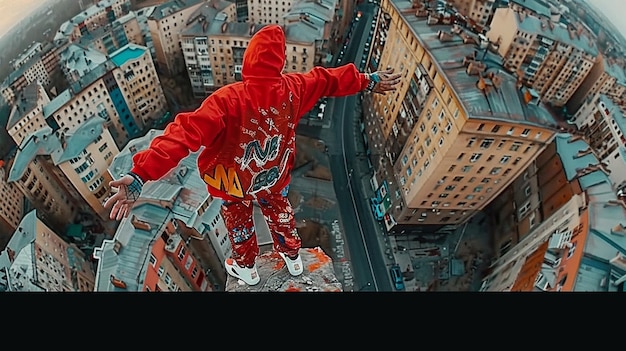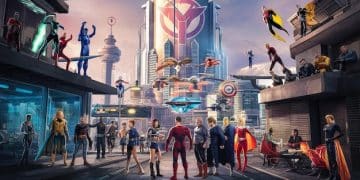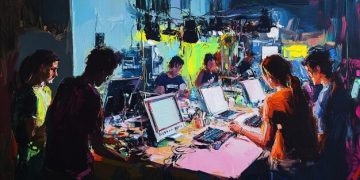The Superhero Saga Continues: Exploring the Evolution of Comic Book Movies

The Evolution of Comic Book Movies: What’s Next for the Superhero Genre? delves into the transformative journey of superhero cinema, from its humble beginnings to its current dominance and speculates on the innovative directions the genre might take in the future, addressing audience fatigue and exploring uncharted narrative territories.
The world of cinema has been forever changed by the incredible rise of superhero movies. From the campy adventures of yesteryear to the sophisticated narratives and stunning visuals of today, the journey of these films has been nothing short of remarkable. Let’s dive into The Evolution of Comic Book Movies: What’s Next for the Superhero Genre?
From Page to Screen: The Golden Age of Comic Book Adaptations
The initial forays of comic book characters onto the silver screen were marked by a sense of novelty and a desire to capture the essence of the source material. These early adaptations, though limited by the technology of the time, laid the foundation for the superhero film genre.
These early films were made for children and families. While visually lacking and filled with campy theatrics, they introduced mainstream audiences to iconic figures like Superman and Batman, whetting the appetite for more sophisticated adaptations.
Early Superhero Films
The beginnings of superhero cinema can be traced back to the mid-20th century. These early adaptations set the stage for the future evolution of the genre.
- Superman (1948): One of the first live-action portrayals of Superman, setting the standard for superhero adaptations.
- Batman (1966): A campy and colorful take on the Caped Crusader, beloved for its over-the-top performances and memorable theme song.
- Captain America (1944): A serialized adaptation during World War II, showcasing Captain America’s patriotic adventures.
Even with these early productions, the possibilities of faithfully translating comic book stories were being explored. Despite their limitations, they instilled a dream that the future would only strengthen.
The Dark Knight Rises: A New Era of Gritty Realism
In the late 20th and early 21st centuries, superhero movies began to evolve, embracing darker themes and more complex narratives. This shift marked a significant turning point, attracting a broader audience and earning critical acclaim.
After years of middling entries, this shift saw the arrival of directors who understood the depth and nuance of comic book lore. Characters were no longer just two-dimensional heroes and villains; they were complex individuals grappling with relatable issues.

Milestone Films of the Era
Several films during this period redefined what superhero movies could be, pushing boundaries and setting new standards for storytelling and visual effects.
The cinematic bar was raised with:
- Blade (1998): A darker, more violent take on the superhero genre, paving the way for mature comic book adaptations.
- X-Men (2000): Successfully brought a team of mutants to the big screen, balancing action with social commentary.
- Spider-Man (2002): A blockbuster hit that captured the spirit of the friendly neighborhood superhero, blending humor with heart.
There was an uptick in success for mature themes and sophisticated plots, broadening audience appeal and changing expectations for the genre.
The Marvel Revolution: Building a Cinematic Universe
The Marvel Cinematic Universe (MCU) revolutionized the superhero genre by creating a cohesive and interconnected world. This ambitious approach established a new model for franchise filmmaking, setting a high bar for others to follow.
While other film companies attempted to replicate the connected, canonical style, the MCU’s success has yet to be matched. Due to a strong creative team, the original movies resonated with people, and the excitement surrounding each new installment drove anticipation.
Key Elements of the MCU Success
Marvel’s approach to creating a shared universe involved several key factors that contributed to its widespread success and cultural impact.
The reasons for the MCU’s ongoing success include:
- Interconnected Storytelling: Characters and storylines weave in and out of different films, creating a sense of continuity and investment.
- Character Depth: Each superhero is given a unique personality and backstory, allowing audiences to connect on a personal level.
- Consistent Tone: Balancing humor, action, and drama, the MCU maintains a consistent tone that appeals to a broad audience.
As the franchise grew, there were some concerns from detractors that the market had grown oversaturated, but Marvel has demonstrated tenacity and versatility when it comes to developing a long term plan.
Superhero Fatigue: Addressing the Genre’s Challenges
After years of dominance, the superhero genre faces the challenge of audience fatigue. The constant stream of new releases has led to concerns about repetitiveness and a decline in interest.
Some experts suggest that the market may have been exhausted by the sheer volume of similar films. Concerns about the redundancy of plot structures and character archetypes have grown as the excitement of the films has simmered.

Strategies for Overcoming Fatigue
To combat audience fatigue, the superhero genre needs to evolve, exploring new narrative territories and offering fresh perspectives.
This can be accomplished by:
- Diverse Storytelling: Introducing different genres, tones, and themes to keep the content fresh and engaging.
- Focus on Character Development: Diving deeper into the personal lives and struggles of the superheroes, creating more relatable and compelling stories.
- Innovative Visuals: Pushing the boundaries of visual effects and cinematography to deliver stunning and immersive cinematic experiences.
By acknowledging and addressing the issues of audience fatigue, the superhero genre has the chance to reinvent itself and stay relevant.
Beyond Capes: Exploring New Directions in Superhero Cinema
The future of superhero movies lies in exploring uncharted narrative territories, pushing beyond traditional superhero tropes, and embracing greater diversity and representation. This includes venturing into different genres, such as horror, thriller, and even romance.
The films can also explore real-world issues, such as social justice, climate change, and mental health, grounding their stories in reality while still delivering the escapism and action that audiences expect.
Potential Avenues for Innovation
Exploring new narrative territories can breathe fresh life into the superhero genre, attracting new audiences and reinvigorating existing fans.
New directions could include:
- Genre Blending: Combining superhero elements with other genres, such as horror or fantasy, to create unique and unexpected experiences.
- Anthology Series: Exploring different characters and storylines within the same universe, allowing for more focused and diverse narratives.
- Focus on Villains: Giving villains their own standalone movies or TV shows, exploring their motivations and backstories in greater depth.
The superhero genre can continue to innovate and inspire by embracing change and pushing the boundaries of storytelling.
The Future of Superheroes: A Vision for Tomorrow’s Blockbusters
As superhero movies continue to evolve, the possibilities for future blockbusters are limitless. By embracing diversity, innovation, and character-driven storytelling, the genre can remain a dominant force in the entertainment industry.
The world of comic book films is always changing, and we can count on filmmakers and comic book writers to explore innovative ways to tell the stories of iconic personalities. Filmmakers are becoming increasingly experimental, and this will likely include the superhero genre.
A few creative avenues to tap into include:
- International Superheroes: Featuring superheroes from different countries and cultures, showcasing diverse perspectives and experiences.
- Interactive Storytelling: Allowing audiences to influence the plot and outcome of the movie through interactive elements.
- Virtual Reality Experiences: Immersing viewers in the superhero world through VR technology, creating a truly unique and engaging experience.
By continuously adapting and evolving, superhero movies can inspire audiences around the world for years to come. They possess the creative potential to continue to be relevant and interesting.
| Key Point | Brief Description |
|---|---|
| 🎥 The Golden Age | Early adaptations set the foundation for superhero cinema. |
| 🌃 Gritty Realism | Darker themes redefine superhero narratives. |
| 🦸 Marvel Revolution | A cinematic universe connects storylines and heroes. |
| 😴 Fatigue Factors | Genre must reinvent itself to combat audience fatigue. |
Frequently Asked Questions
▼
While there were earlier serials and adaptations, many consider “Superman” (1978), starring Christopher Reeve, to be the first modern superhero movie. It was the first big-budget film to treat the genre with respect.
▼
The MCU’s success can be attributed to its interconnected storytelling, blending multiple movies and characters into larger narrative arcs. This approach created a sense of continuity and kept audiences continually invested.
▼
Superhero fatigue can be mitigated by diversifying storytelling, focusing on character development, and pushing visual boundaries. This keeps the genre fresh and resonates more deeply with audiences and their expectations.
▼
Superhero movies can explore new genres like horror or fantasy, experiment with anthology formats, or focus on villains to expand the narrative possibilities. There are several creative possibilities that have barely been touched.
▼
The overall trend will hopefully include the integration of a variety of voices from around the world. If that ends up the focus, interactive storytelling and virtual reality experiences can enrich the viewing experience overall.
Conclusion
From their humble beginnings to their current status as blockbuster titans, superhero movies have come a long way. The golden age will continue as filmmakers address the genre’s challenges and venture into uncharted territories. The future of superhero cinema promises even more thrilling rides for audiences worldwide.





